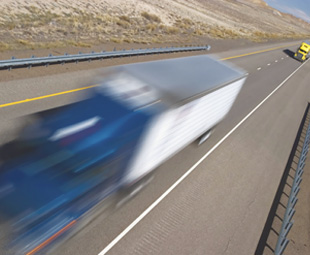The future is here!

Since the early days of motoring, various types of powerplants have contested the market… and the competition shows no signs of letting up, writes JAKE VENTER.
Electric vehicles are back – for the second time. Turbodiesels are everywhere and hybrids are growing in popularity. To some it may seem that the petrol engine is on the decline, but it has fought off interlopers before and has not yet reached the zenith of its efficiency.
There’s always been competition… In the beginning vehicles powered by petrol, steam and battery/electric power units were mixing it in the marketplace. Steam power disappeared first because these vehicles were just too cumbersome. Electric cars outsold the other types because hardly anybody drove long distances and most motorists hated changing gear or swinging a crankhandle. It took the invention of the electric starter in 1912 to reduce electric vehicle production to a trickle, but after that petrol engines ruled the roost.
The past 15 years, however, have seen a steady influx of diesel-engined vehicles (especially in terms of cars), while Toyota and Honda created a market for hybrids. At the moment, plug-in electric cars are grabbing a lot of attention, but will the euphoria last? Let’s look at the various options.
PETROL ENGINES
In a petrol engine, both mechanical and breathing efficiency are at their best at large throttle openings. The former continues to improve as engine speed builds up, but the latter peaks at the engine speed where maximum torque is developed. The result is that a small engine working hard is more efficient than a big engine cruising at small throttle openings. A petrol engine is at best only 25 per cent efficient.
What can be done? A lot of research is channelled towards improving the combustion process. Lately, direct injection of fuel into the combustion chamber has become widespread. This reduces fuel consumption by making lean-burning possible at part-throttle, and is often combined with downsizing engine capacity, which is usually done without reducing performance levels by using turbo- or super-charging, or even both. The result is that fuel consumption is only reduced at small throttle openings where the extra performance is not utilised. If you use the extra power you’ll have to pay for it at the pumps.
On the vehicle side there is a continual strive towards lower drag coefficients. Frontal area cannot be reduced much without diminishing interior space to impractical levels, but total drive-train losses are being reduced by moving away from hydraulic automatic transmissions. Low-friction tyres are coming onto the market, but the savings to be achieved in this direction cannot be more than one per cent.
DIESEL ENGINES
A diesel breathes in pure air and the fuel is added at the beginning of the power stroke. This means there is no throttle butterfly, so that low-speed breathing is vastly improved compared with petrol engines. It also implies that the overall mixture is lean even when maximum power is demanded. These factors combine with a high compression ratio to endow diesel engines with a maximum efficiency of about 33% and results in a 20 to 25% improvement in fuel consumption over petrol engines.
These engines have been improved beyond recognition in the past 20 years. Common-rail injection technology combined with electronic mixture and timing control as well as the recent introduction of piezo-electric injectors that operate fast enough to allow up to six injection pulses per power stroke has resulted in making the diesel very quiet. Turbocharging has transformed the torque per litre of these engines from 70 to over 200 Nm/litre, with the result that the average pressure on the pistons of such an engine is often higher than in a Formula One engine. Consequently, turbodiesel engines are generally not as robust as their unblown companions.
HYBRIDS
A petrol/electric hybrid is a successful attempt to improve on a petrol engine in a number of ways. The low breathing efficiency at cruising speeds is tackled by reducing engine size so that the engine has to run closer to the maximum torque speed for a longer percentage of its operating life. The resulting lack of performance and accelerating ability is taken care of by the fitment of an electric motor that comes into play when extra power is needed. This has the drawback that the battery has to be kept in an adequate state of charge, largely by the petrol engine.
The presence of an electric propulsion motor has the advantage that battery charging can be done by kinetic energy recovered during coasting and braking. Under these conditions, the motor changes into a generator that utilises the car’s moving wheels as an energy source, but it is estimated that only about 20% of the energy is recovered. Hybrids are generally more economical at low speeds where the electric component will be brought into play, but at cruising speeds, where the smallish petrol engine has to work on its own, the fuel consumption takes a dive.
A mild hybrid only has enough battery capacity to aid acceleration and recapture some energy so that it is not as effective as a full hybrid. The latter has a larger battery and a stronger propulsion motor so that it can be motored on electric power for as long as the battery lasts. A hybrid’s fuel consumption saving over a petrol engine is of a similar order as when a diesel engine is employed.
Not many diesel/electric hybrids have been built because they will be significantly more expensive than petrol/electric hybrids, but some are on the way and they promise to augment a diesel engine’s operating economy by adding the hybrid component.
Plug-in hybrids have the ability to recharge their batteries at home or at a charging station. This belt-and-braces approach may make sense if the electricity comes from non-fossil fuels, but at the moment it just seems like another means of jumping onto the “plug-in bandwagon”.
PLUG-IN ELECTRICS
Plug-in electric vehicles are very much in the news, but how practical are they? Their ranges are severely limited and owning an EV requires careful planning to ensure the battery always has enough power for any planned – and sometimes  unplanned – journeys. They are claimed to be zero-emission vehicles, but in reality they only shift the pollution from the city streets to the electricity supplier. This is fine if the electricity is generated from non-fossil fuels, but it has been calculated that the equivalent CO2 emissions per vehicle could be as high as 130 g/km if the energy comes from coal-burning plants because these units burn practically pure carbon.
unplanned – journeys. They are claimed to be zero-emission vehicles, but in reality they only shift the pollution from the city streets to the electricity supplier. This is fine if the electricity is generated from non-fossil fuels, but it has been calculated that the equivalent CO2 emissions per vehicle could be as high as 130 g/km if the energy comes from coal-burning plants because these units burn practically pure carbon.
Charging is done either at home or at the dedicated charging stations that are at present being constructed in many parts of the world. The engine and drivetrain requires very little maintenance, but the lithium-ion (Li-ion) batteries that most of these cars require cost enough to make these vehicles expensive compared with similarly-sized petrol-engined cars.
CONCLUSION
After weighing up the strengths and weaknesses of the various types of powerplants, it’s evident that a turbodiesel engine currently remains the best available alternative to a petrol motor, both in terms of efficiency and practicality. Plug-in vehicles will gain in popularity when their ranges and charging point infrastructure improve, but for the foreseeable future, the internal combustion engine is far from finished… Technologies such as Mazda’s SKYACTIV and Mercedes-Benz’s Diesotto, which combine the best of a petrol and diesel engine, to name but two, will ensure that improvements in engine efficiency remain on an upward curve.
Jake Venter, CAR magazine’s technical editor, is passionate about engines, science, physics and technology in general (and he’s hugely knowledgeable on these subjects too). Venter is an engineer, qualified mechanic and former shepherd (no we are not kidding).
Published by
Focus on Transport
focusmagsa



